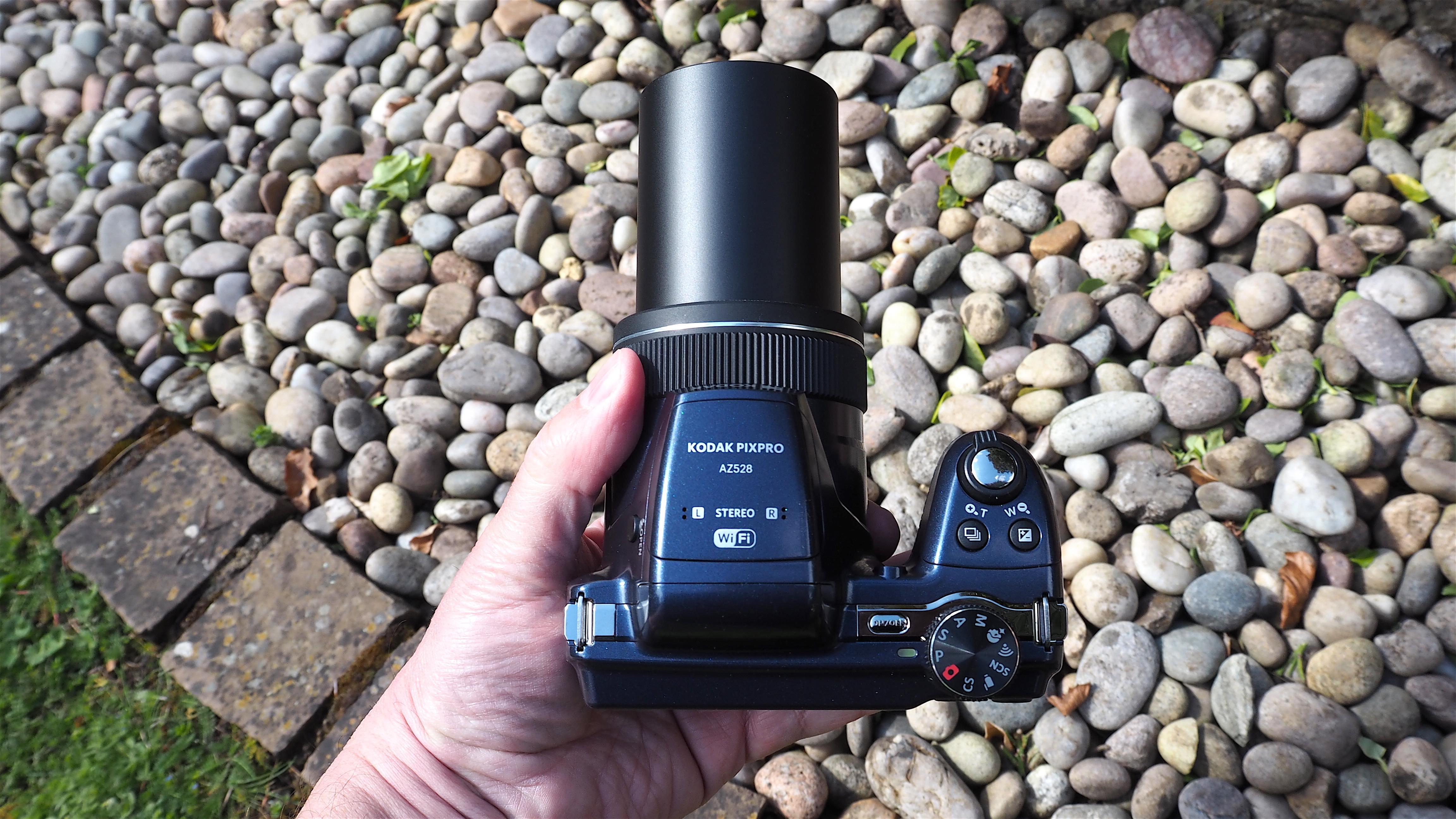
Fifteen years ago every manufacturer worth their salt offered a handful of cameras very similar in looks, appearance, and specification to the Kodak Pixpro AZ528. Known at the time either as ‘superzooms’, all-in-ones, or bridge cameras – so called because they formed a ‘bridge’ between the ease of use of a pocket compact and a more fully featured DSLR – these chunky devices boasted just about every feature a photo enthusiast would need, including a generous focus range, all within the one camera body.
OK, so the sensor size was smaller than that of a DSLR, while, for those looking to achieve pin-sharp results, their single jack-of-all-trades lenses proved no match for a prime telephoto lens. But for photographers wanting to shoot a broad range of subject matters without having to change either lens or camera to best suit the job, these bridge models were certainly good enough… at the time.
• Read More: check out more of the best bridge cameras to get up close to the action.
What happened next was the introduction of mirrorless cameras; more portably convenient than a DSLR while offering results so closely comparable most of us couldn’t tell the difference. Unsurprisingly enthusiast photographers started to gravitate towards this new format – and are still doing so – with the result that bulkier superzooms/bridge cameras/all-in-ones largely died out. Or so we thought…
Has Kodak’s license holder JK Imaging spotted an opportunity that others have missed by reintroducing a bridge camera in the Kodak Pixpro AZ528?
Are there still enthusiast photographers – or indeed families – out there who don’t want to bother swapping out or building a collection of lenses for their DSLR or mirrorless, and who still see the benefit of having the single camera body and single lens that can cope with most subjects thrown at it?
While we ponder that, let’s investigate what the Kodak Pixpro AZ528 might offer photographers that a pocket point-and-shoot compact, their mirrorless/DSLR, or even their smartphone, cannot…

Specifications
Sensor: 16 megapixels backside illuminated 1/2.3-inch CMOS
Sensitivity range: Automatic, ISO100-3200
Video: Full HD 1920x1080 pixels
Lens: 52x optical zoom, 24-1248mm equivalent in 35mm film terms
Monitor: 3-inch LCD, 460k dot resolution
Viewfinder: No
Battery life: 240 shots based on CIPA standards
Dimensions: 121.3x85.8x97.5mm / 4.96x3.51x4.48-inches
Weight: 508g
Key Features
Like the original bridge or ‘superzoom’ cameras of the mid-2000s, we’ll be considering this one primarily for the whopping 24-1248mm focus range being offered in 35mm terms; and for a far more affordable price than a digital SLR or mirrorless camera plus telephoto lens with anything approaching an equivalent focal length. The already crazy 52x optical zoom can be further boosted by the 4x digital zoom for the equivalent of a frankly ridiculous 208x. Bear in mind though that this will cause visible deterioration in image quality, as all the camera is really doing is cropping the image to appear as if we’ve zoomed in beyond its native optical capability.
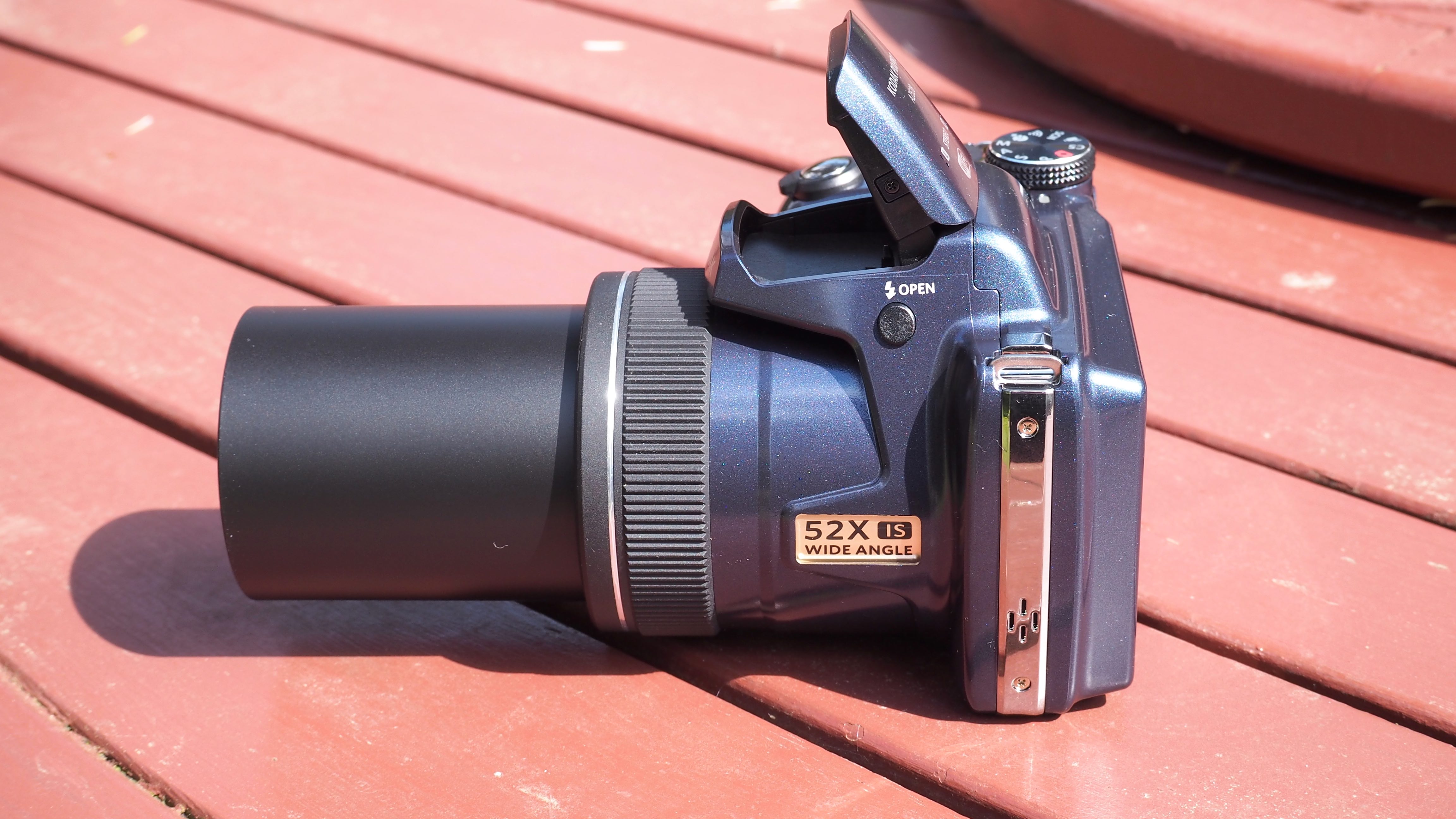
Of course, there have to be some compromises in order to be able to offer this setup for a value-added price, and the 1/2.3-inch back-illuminated CMOS sensor at the heart of the Kodak Pixpro AZ528 – the ‘AZ’ denoting ‘Astro Zoom’ – is both physically smaller than those alternative formats, plus has a modest 16 megapixel resolution. Even entry-level DSLRs and mirrorless cameras now typically start at 24 megapixels and above.
As we noted in our introduction however, there will be those who still consider what the AZ528 offers to be ‘good enough’ for what they want it for, and it’s that audience we’re speaking to here. This isn’t a DSLR or mirrorless camera ‘killer’ by any stretch, but conceivably we might want to own one alongside them if that very extensive focal length appeals. For those looking to use this camera for shooting sports from a distance, a 6fps burst shooting option is provided; which is useful without being class leading.
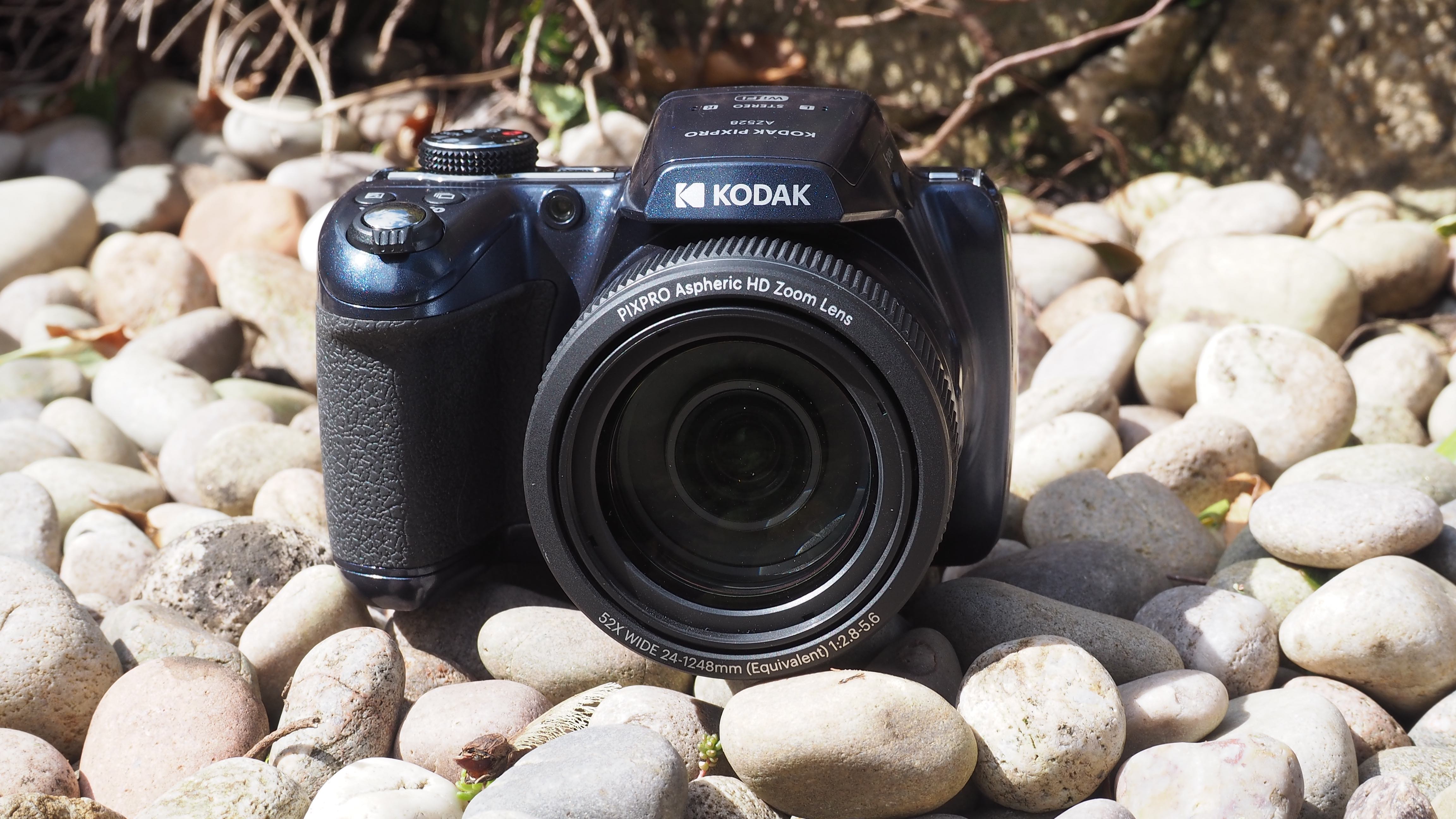
Build & Handling
Like most budget bridge cameras of yore, the Kodak Pixpro AZ528’s build is plastic-y to the touch. That said, even without supplied rechargeable lithium-ion battery or optional SD media card inserted, the camera does feel relatively robust when gripped.
The grip itself is big enough that we were able to curl the lower three fingers of our right hand around it, while our forefinger hovered over the shutter release button, and our thumb came to rest on the small rubber pad at the rear, to the left of a large red button for recording video clips. In other words, the layout feels commendably ergonomic in an ‘if it wasn’t broken 15 years ago, there’s no need to fix it now’ type approach.
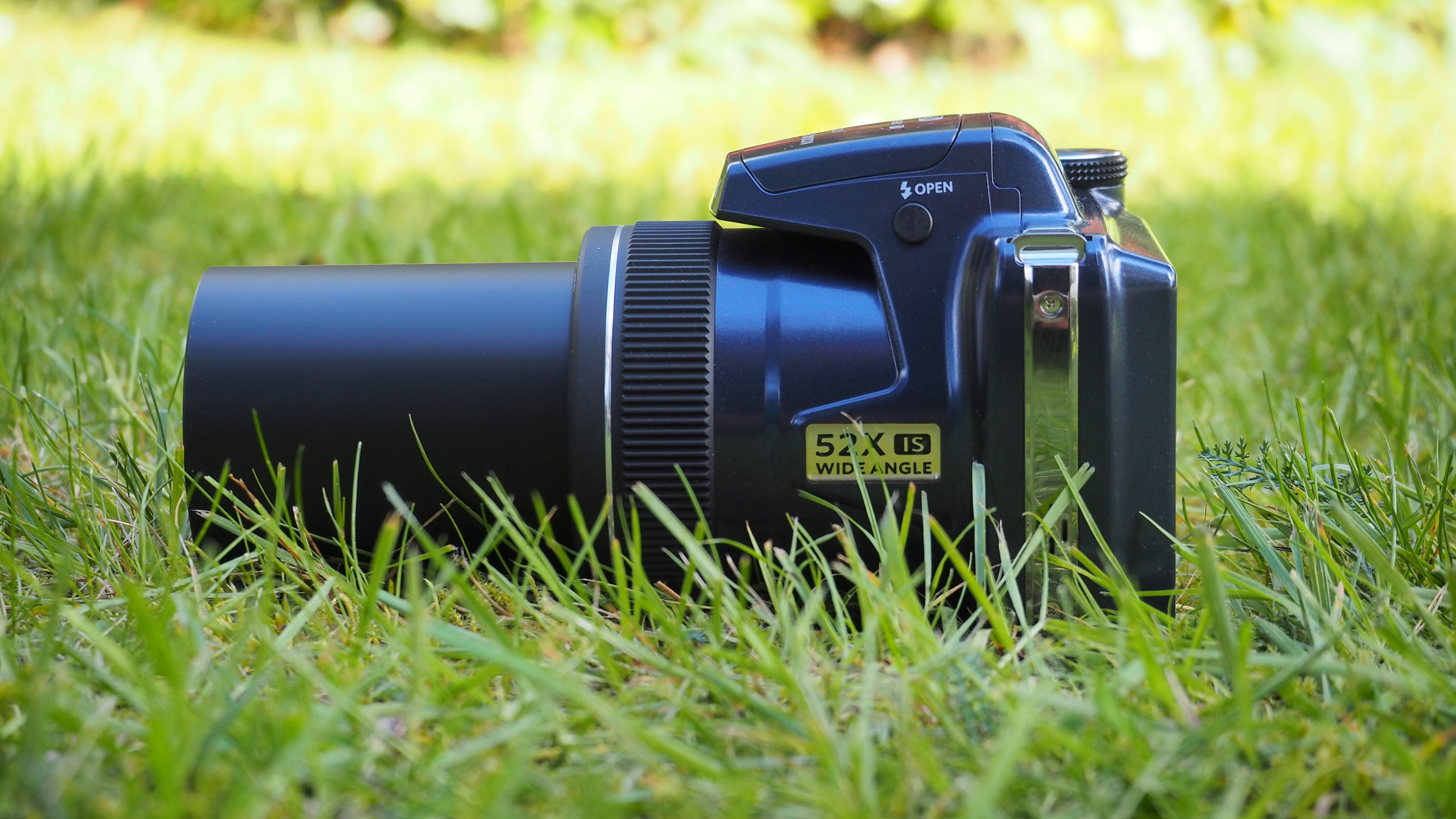
With this large lens bolted onto the front, it would be essential for any manufacturer to include some form of anti-shake mechanism to prevent hand wobble towards the telephoto end of the zoom and resultant blurred images. Here we get optical image stabilization as opposed to the sensor-shift variety, which in turn is preferable to mere software-enhanced digital image stabilization.
In practice, we found it best to fire off two or three shots if using the camera at a setting approaching its maximum zoom, so as to get at least one image that wasn’t soft. The alternative is, of course, attaching the camera to an optional tripod, and a screw thread for doing so is happily provided at its base. Use of this camera is intuitive and everything fell readily to hand, with the result we were left free to concentrate on whatever subject was in front of our lens, rather than being distracted by the camera itself.
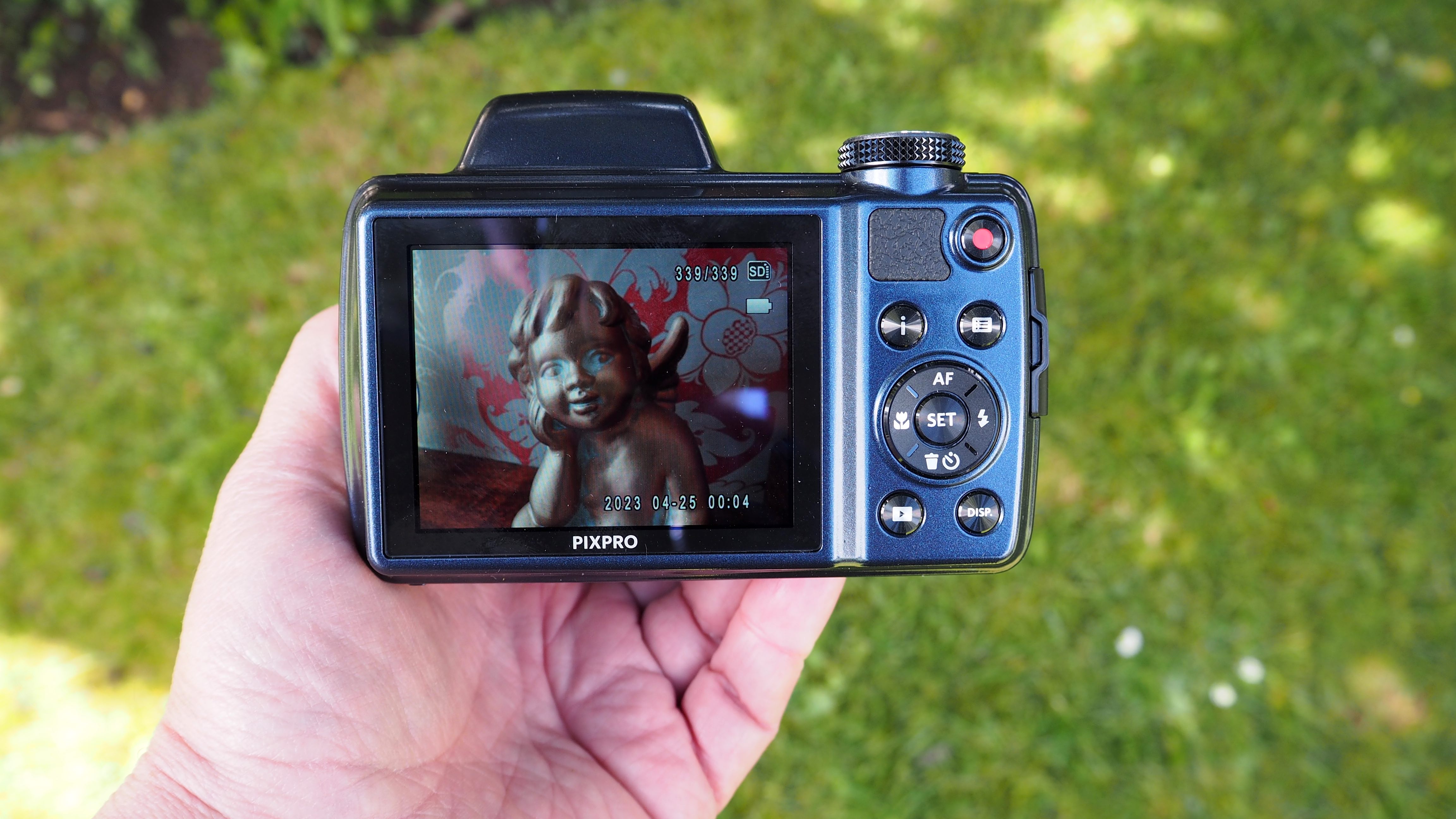
Performance
With no eye-level optical or electronic viewfinder as we would expect to find on a mirrorless camera or DSLR, users of the Kodak Pixpro AZ528 must rely on its 3-inch LCD screen and 460K pixels resolution for shot composition and review. Here the camera’s monitor is fixed, rather than angle adjustable – which is a shame, as a more flexible screen would, in turn, allow for more creatively flexible compositions. Unsurprisingly it’s not kept up with the times by featuring a touch screen either, but then everything here feels distinctly retro and a throwback to the mid-2000s.
As we’d expect from handling many dozens of these devices before, the optical zoom is controlled via a lever that ergonomically encircles the shutter release button, so we can be framing up our image and firing off a shot in quick succession, thus avoiding missing that decisive moment.
The further we get toward the telephoto end of the zoom when shooting with the camera handheld, the less steady the image appears on the screen. By taking two or three shots each time, we were able to get usable results at both ends of the zoom, which suggests that its maker hasn’t over-egged the pudding in order to achieve what looks like an impressive specification on paper.


Although there is a ridged ring located around the lens barrel, which one might expect may provide an alternative means of adjusting the focal length, or manually focusing, this is just for show, as it’s fixed solidly in place and doesn’t rotate. What can be manually activated here, however, is the pop-up flash that sits directly above the lens, the hood for which also houses stereo microphones. We also get a program, aperture priority, shutter priority, and manual modes alongside auto, for any photographer who does want to get a little more hands-on.
If we’ve got a criticism it’s that without a hood to shade it, a lens like this is prone to instances of lens flare in brighter conditions, and also, if we look closely, the appearance of chromatic aberration/purple fringing where the likes of tree branches meet the sky. Generally though, colors are rich and there is a pleasing level of detail delivered by its uninspiring-on-paper 1/2.3-inch CMOS sensor. We also found some of the user-selectable in-camera settings, including the bold ‘dayglo’ purple and black of the ‘Punk’ setting, a spot of additional fun.

Verdict
This is yet another retro-styled and featured camera from the Kodak brand that doesn’t advance things on all that much, if at all, from where digital camera technology stood 15 years ago. However, it could be argued that developments in bridge cameras only dried up because demand fell off. Could the Kodak Pixpro AZ528 kickstart a superzoom camera revival?
We very much doubt it, but there may just be enough photographers out there still looking for a massive zoom reach at an affordable price, with fuss-free operation to boot, to make it worthwhile for the manufacturer to bring back a type of camera that once was commonplace. After all, just look at the impressive comeback of instant print cameras, that have both revitalized the fortunes of Fujifilm and seen the Polaroid brand return to the market.
You might also like...
With most manufacturers having turned their backs on bridge cameras of any description in recent years, the second-hand market, or indeed Kodak’s own branded ‘AZ’ range, is where we’ll find alternatives to the Kodak Pixpro AZ528 these days.
Options here include the 65x optical zoom Kodak AZ652 and, gulp, 90x Kodak AZ901 models, if the frankly massive 52x optical zoom focal range offered by this camera still doesn’t quite cut it.
Read More: Check out the latest rugged adventure cameras in our guides to the best bridge camera, the best camera for sports photography, and the best travel cameras.







